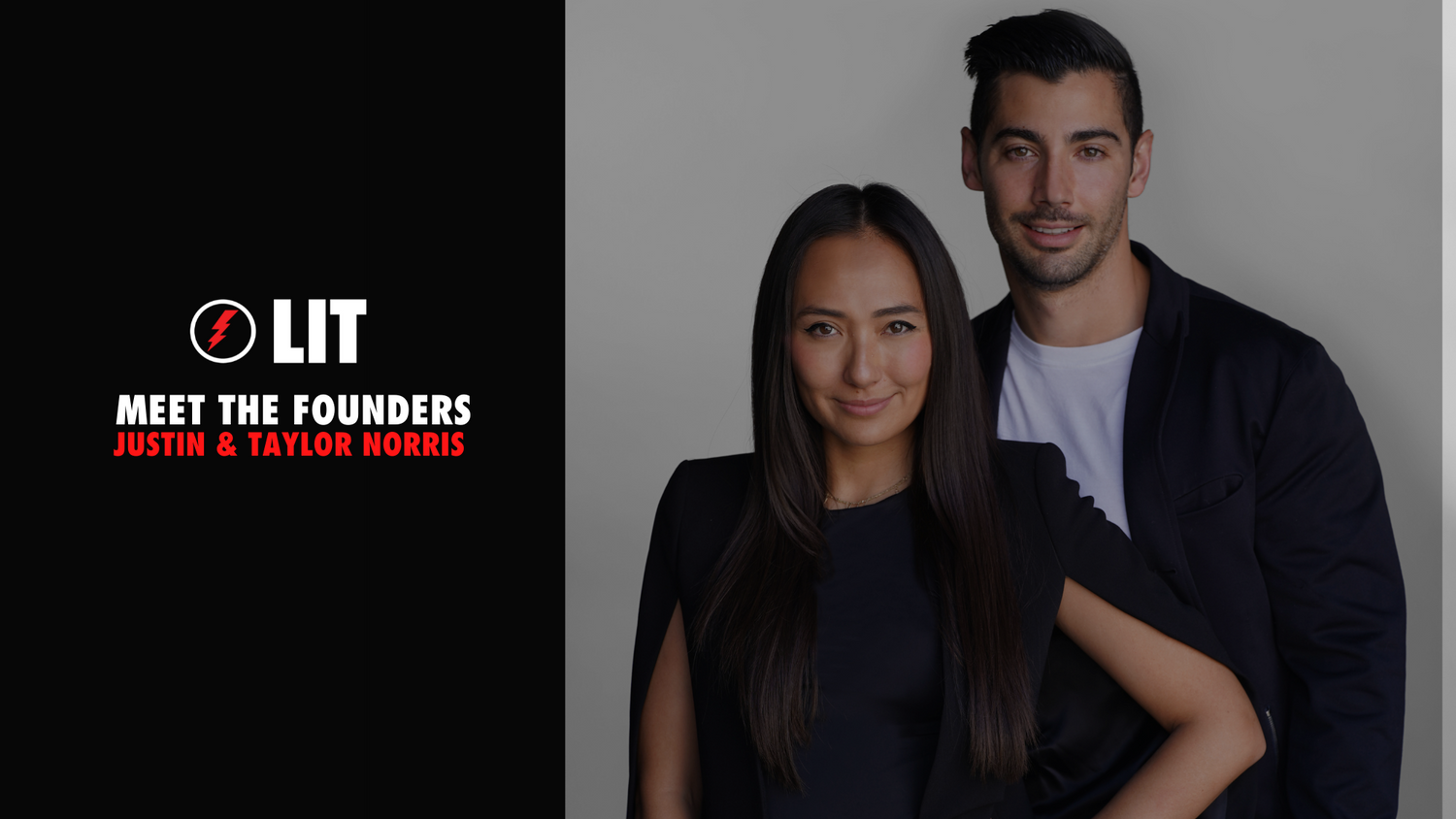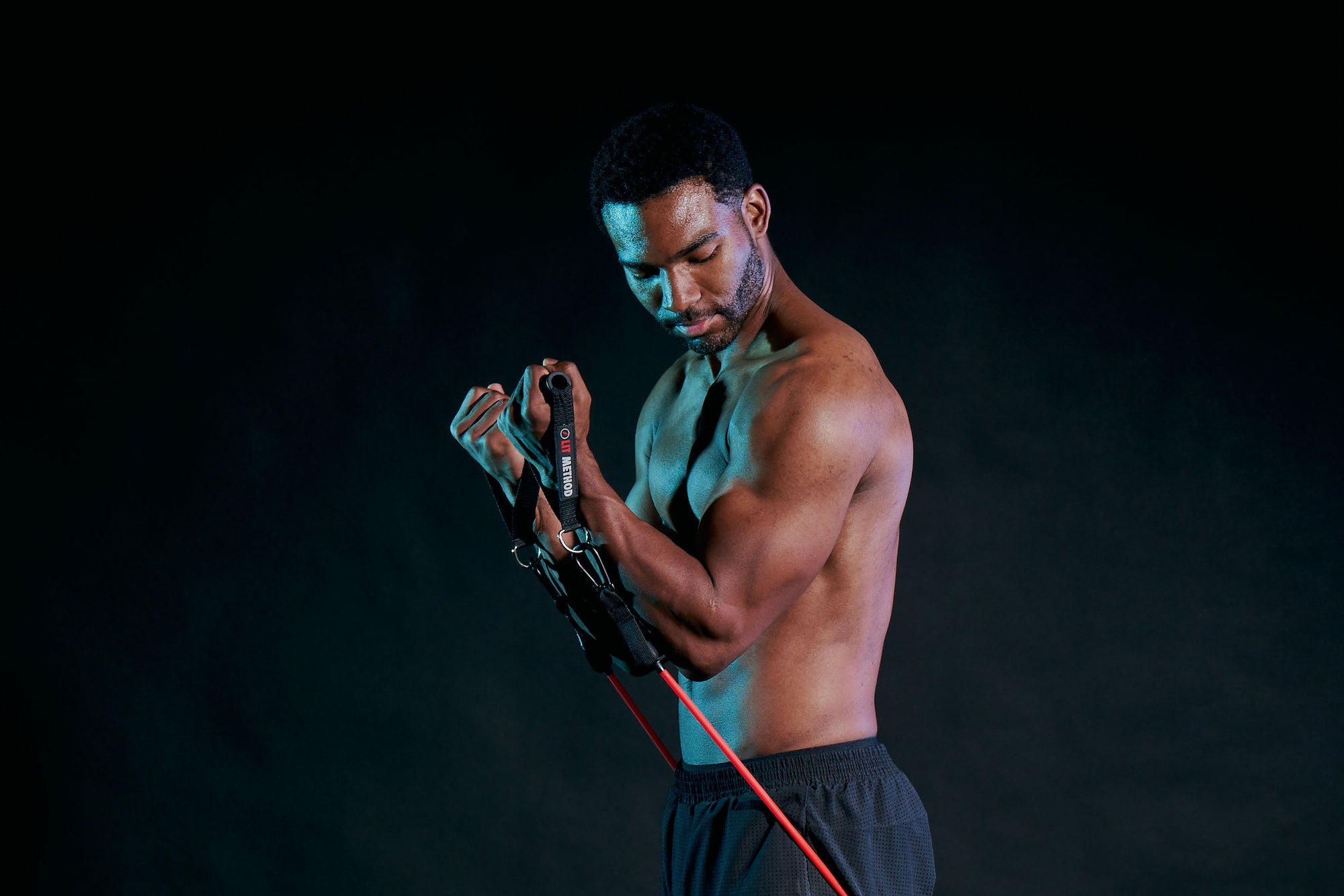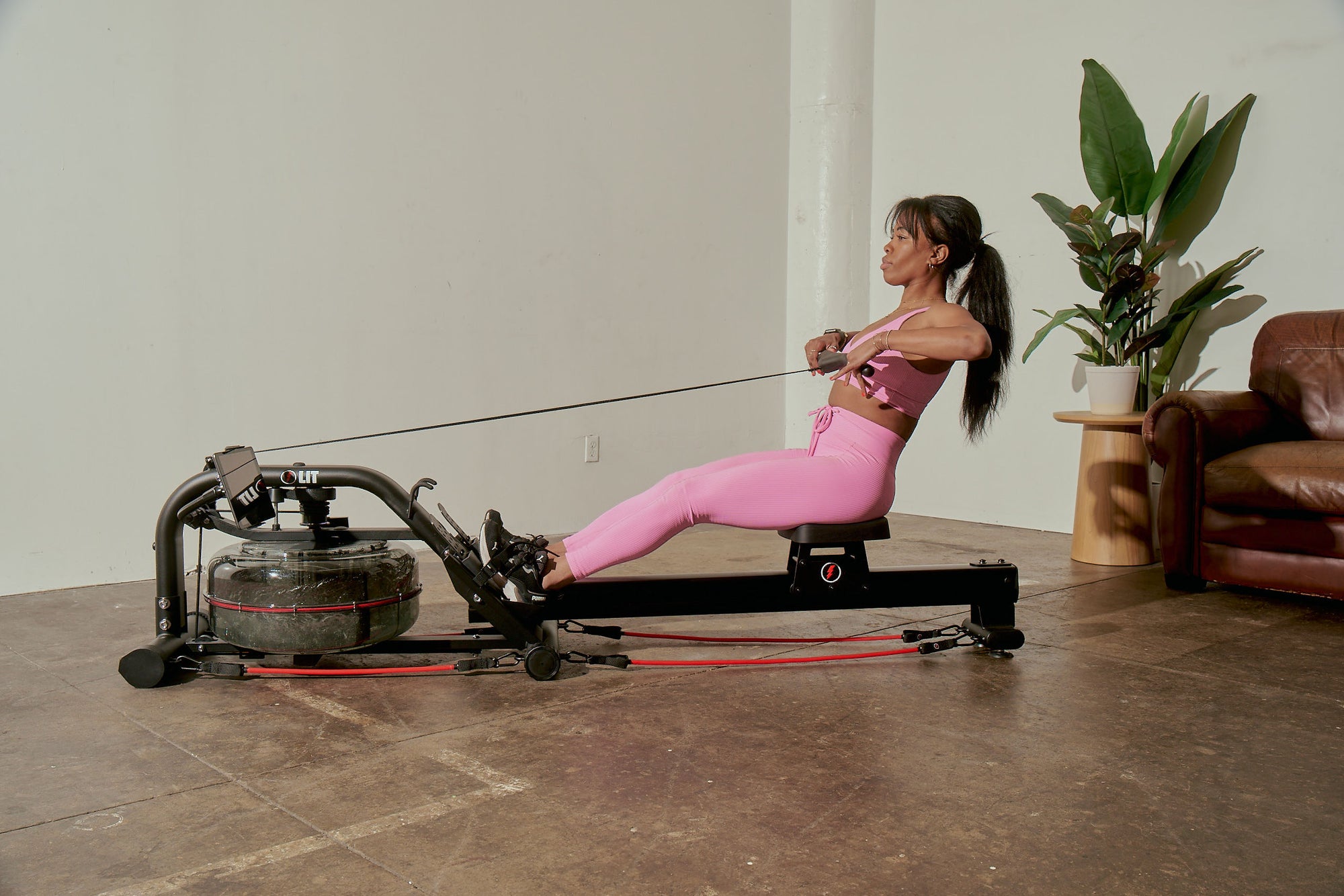AN INTERVIEW WITH CO-CEOS AND CO-FOUNDERS, JUSTIN AND TAYLOR NORRIS
LIT Co-CEO and Co-Founder Justin Norris often speak about the life-threatening accident that led to LIT, but our members have longed hoped to gain greater insight into the infamous injury that inspired him to change the way people approach fitness.
We recently sat down with him, and with Co-CEO, Co-Founder, and wife Taylor Norris, to talk about this and a series of landmark LIT moments that have grown the brand into the Boltcult powerhouse it is today. You can check Taylor's interview and learn more about her here.
THE MAKING OF A METHOD
DURING SIGNATURE LIT CLASSES, WE'VE HEARD YOU TELL MEMBERS THAT SO MUCH OF THE PERSONAL INSPIRATION AT THE HEART OF LIT CAME FROM AN INJURY YOU HAD HAD WHEN YOU WERE YOUNGER. CAN YOU TELL US WHAT HAPPENED?
JN: When I was a teenager, my father was remodeling his house and a mirror fell onto my arm. I was immediately transported for emergency surgery, but during the transport, I experienced tremendous blood loss and was in and out of consciousness.WHAT EXACTLY HAPPENED TO YOUR ARM?
JN: The best way to describe it is to say that my main artery was severed and snapped so high up that it was difficult for the doctors to locate it. And about three hours into the surgery, the doctor discussed with my parents the likelihood of having to amputate my arm. At the time, I was an all-star baseball and football player in high school, and the idea that I could lose my arm was just simply not an option.
They brought in a second surgeon and after a couple more hours were able to find my main artery. I remember looking down at my arm and before fully passing out, one of the doctors said, “I don’t want this kid to die on my watch.”
AND HOW DID THIS SURGERY , THIS MOMENT LEAD TO LIT?
JN: This is the early origin story. During my first post-op visit with a doctor, he told me that I would never have full mobility in my arm again — that I would have to stay away from any high-impact sports that could potentially twist and pull my wrist in directions that would cause more damage to my tendons.
So I started physical therapy — which lasted a little over two years. Mobility drills with my fingers and risk were tedious, and about four or five months in, while doing them, I saw another person in the PT room attempting some drills of their own. He was an electrician who had been electrocuted on the job — his fingers were essentially fried. I was thinking, “Both of his hands are destroyed. This guy’s smiling and showing up — he was really optimistic about the smallest progress and I started scheduling my sessions at the same time as him — for accountability and motivation. It was really inspiring to see him start to move his hands again. When they told him he was going to get mobility back in his hands and have feeling there again, I was just so thrilled for him. And that was the moment I made a decision that I wanted that for myself — that I wasn’t going to plan everything around what I supposedly couldn’t do. I wasn’t going to sit there and have my arm be immobile for the rest of my life. So I started really taking the rehab seriously.
There were certainly emotional setbacks. I was literally going to school and playing baseball and sports every day until the sun went down. And even on weekends. I was out there seven days a week — so to have that change in an instant, was soul-crushing. I tried these workarounds, like doing pushups with my knuckles because I couldn’t bend my wrists. I tried to do a bench press and I couldn’t push anything. It would feel unstable — it felt like my wrist was going to break. I tried dumbbells for bodyweight work and free weights, but your hand rolls with those. A dumbbell doesn’t stay straight and the rolling got so dangerous. I would drop the weight out of my hand and I was then facing that liability.
It wasn’t long before I realized the only thing that was stable enough was a resistance band — what I was using in PT. So that’s when I started bringing my resistance band work from PT home with me. I started doing things for my arm — and I fell in love with developing programs for my body. I felt like I had lost so much muscle and this gave me control of getting that back. I didn’t have to do everything so slowly or timidly because the risk with the bands wasn’t there. Because there was constant tension all the way through, I had the stability to work harder without the fear of reinjury. And I fucking loved it.
TN: It really was his a-ha moment. We met years later at a gym and we were both seeing clients come in with that lack of control, and that fear of reinjury after having accidents of their own?
SO HOW DID YOU DECIDE ON THE METHOD ITSELF? YOU WERE FIRST INSPIRED BY JUSTIN'S INJURY, BUT WHAT ELSE FACTORED INTO THAT?
TN: Justin and I really fell in love with this idea of making rehabilitation a part of the workout. We knew that the more we could replicate the way that had worked for him, and the more we could make people feel safe, the better and more effective it would be. We came up with this concept of ‘building bodies, not breaking them,’ and that’s still what every move, every program, and every product from LIT ladders back to. 
JN: That electrician in the PT clinic was a big factor in this thought process, too. I started to realize there are a lot of people out there like him — and a lot of people like me, people who really don’t want to feel deflated off the bat, who don’t want to start a rehabilitation process by being told what they can’t do. They want to know what’s possible. He showed me what was possible. And those are the types of experiences that Tay and I really used to drive this idea of combining rowing and resistance bands, of creating something for the millions of people with injuries, chronic injuries, or even those who are looking to be proactive and have this sustainable method focused on longevity and letting you do what you love for as long as possible.
TN: There’s a misconception that strength training means weight training. It doesn’t have to. Justin is the proof. Our combination of personal training, physical training, and injury prevention is not only what brought him back to life — in terms of mobility, confidence, and more — but it’s what has empowered him to maintain his strength, his health, and well-being. And that is true for so many members in our community.
A MACHINE BORN OF NECESSITY
TAYLOR, YOU HAVE A DEGREE FROM PARSONS SCHOOL OF DESIGN AND YOUR BACKGROUND IS IN PRODUCT DESIGN. HOW DID YOUR EXPERTISE IN THIS ARENA MESH WITH JUSTIN'S AND WHAT ROLE DID SYNTHESIZE YOUR TWO FIELDS PLAY IN THE NEXT CHAPTER OF LIT?
TN: We were using resistance bands and a standard water rower and mixing exercises, designing new programs, and just experimenting with how we could make the combination of the two high-intensity but still keep it low impact on joints. It was trial and error with different resistance and different moves on the rower — and then figuring out what fusion was best.
JN: And we were training clients privately for a long time, but the demand for the method was growing faster than we could sustain. Plus we had always said we wanted to make the method accessible to as many people as possible. So we opened up our first studio in 2016 in West Hollywood, CA.

TN: It was a small studio in a strip mall. The parking was terrible, but the location was great. The classes were selling out. I’d definitely use my background in design for the actual build-out. But what I’d say was the biggest turning point for us during this period was a nuanced look at what our clients needed versus what we physically had in the space.
JN: I was intimately familiar with the type of equipment and the type of exercises that led to an injury.
TN: And I came from a school of thought where you said, “If what I need, or what someone else needs, doesn’t exist, well then I’m going to make it. I’m going to figure out the features and the missing links.
JN: And that’s why we’re such a good team. Because I’m well versed in the function —
TN: And I’m form. We say we’re a wellness and tech company — and this is why. He’s got a background in physical therapy and injury prevention. And mine is in personal training and product design. It’s exactly what we needed for the studio and then for what came next.
YOU ARE REFERRING TO THE LIT STRENGTH MACHINE? TELL US ABOUT THAT INCEPTION?
TN: We looked at what wasn’t on an existing water rower. There was no extended footplate for preventing lower back injury and promoting stability. There was no adjustable resistance. It was just one level of resistance — very monotonous.
JN: Our members really enjoyed core and stability work and we looked at where band attachments could be for both strength and Pilates usage.
TN: And one thing we saw in our studio was the desire for circuit training that isn’t a circus. I mean that pretty literally. You often have to change stations. You’re touching other people’s stuff and sweat — it just felt untenable and it wasn’t the vibe of our brand either. Which is very much promoting safety, longevity, and yes, community — but the experience, not the liabilities of a group/community setting. So we wanted one machine where a person could do everything in a 360-degree field around the machine and that served multiple modalities.

JN: We began prototyping it and testing it out with members in the studio. And then the pandemic hit.
HOW DID THE PANDEMIC IMPACT LIT?

TN: As with everyone in the world, the pandemic has been one of the most challenging times of our lives. But the truth is, we built this machine in 2018. We knew then that we wanted a LIT On-Demand digital component and we were already well down the road with the digital experience built out and almost ready to launch in early 2020.
JN: We launched in May 2020 and the need for an at-home machine, especially one that replaced the need for a rower, a reformer, and a strength training setup, was at a new high.
TN: One of the things we are most proud of is that LIT’s digital subscription is so affordable that we were able to grow this community — and sustain it. It’s user-friendly. It’s motivating. And it’s the companion to this machine that really stands apart from anything else out there.
HOW IS THE LIT MACHINE DIFFERENT THAN SAY, A STANDARD ROWER?
TN: The standard rowers work 86% of your muscles. Because our machine has multiple modalities, you’re working 100% of your muscles.
JN: And you don’t need a home gym with multiple machines. The same machine that is empowering one person to do Pilates is also the perfect setup for strength training.

TN: It doesn’t require electricity. It stands upright. The bands provide up to 100LBS of resistance and there is adjustable water resistance with every row — from 10-40LBS. Amazingly, we were able to prototype this in our LIT classes, get real-time feedback, and launch a machine that truly has something for everyone. I’m proud of that versatility.

JN: I love when people assume it’s a rower and we get to see their face during a demo — when they realize you can perform more than 500 exercises on it. When they know how much value there is in the purchase because not only will it not hurt you, but it will allow you to do a variety of things you love.
A NEXT-LEVEL MOVEMENT
YOU GUYS DESCRIBE LIT AS A WELLNESS AND TECH COMPANY WITH A METHOD, A MACHINE, AND A MOVEMENT. WHAT DO YOU MEAN BY A MOVEMENT.
TN: We are a husband and wife duo. We’re entrepreneurs. Not only have we wanted to make our method and machine accessible to others — but we wanted our business model to be a part of that opportunity, too. We went from honing the method with individuals to a small studio setting to our flagship studio and invention of our proprietary machine and products, to now launching a formal franchise opportunity here in early 2022.

JN: We make it possible for you to get LIT with a machine or just on the mat, from your home or in a studio, or both! We make it possible for a franchise partner to run a physical studio, digital studio, and showroom in a single footprint. It’s a movement because every step of that has been about growing the Boltcult, about making this whole ecosystem something everyone can participate in. People of all ages, backgrounds and physical fitness experiences are a part of LIT’s community.
TN: At the core of LIT is innovating with each step we take. Franchising allows entrepreneurs to grow their own digital and physical memberships. It allows us to grow the global Boltcult. And everything about LIT is rooted in versatility — in the sincere desire to make the experience the first and only of its kind.
WHY DO YOU THINK BIG NAMES ARE FLOCKING TO THE BOLTCULT?
TN: Because there is something for everyone. When Jay-Z and Marcy Venture Partners invested in us in 2021, they said it was because they believed in our vision for how Low Impact Training could change people’s lives — and in a sustainable way. They were excited about the broad spectrum of people we serve and ultimately that we know how to design and develop for when the needs of those people evolve.

N: That is so true. Adrian Gonzalez is a five-time MLB All-Star. He invested in us and he loves that a machine for a pro-athlete is also the machine a recreational rower or Pilates enthusiast uses. His investment — and Jay and MVP — they’re investments aren’t just validation for what we’re building. They lend a belief in the method, the machine, and again, the movement.
WHAT’S COMING UP FOR LIT METHOD?
TN: Franchising. Innovation. A lot is coming down the pike in 2022. Is it cheesy to say that line, “You ain’t seen nothin’ yet”?
JN: Yes. Yes, it is.
TN: Justin —
JN: It is, but it’s also true. Tay’s right. What’s up next, what we are about to unveil is still under wraps, but I’ll just say one thing. It’s another first and only of its kind.
TN: It is. It truly is. And we cannot wait to bring it to our Boltcult.
You can checkout Natfluence Interview with Justin and Taylor Norris on How LIT Method is Unique From Others.





